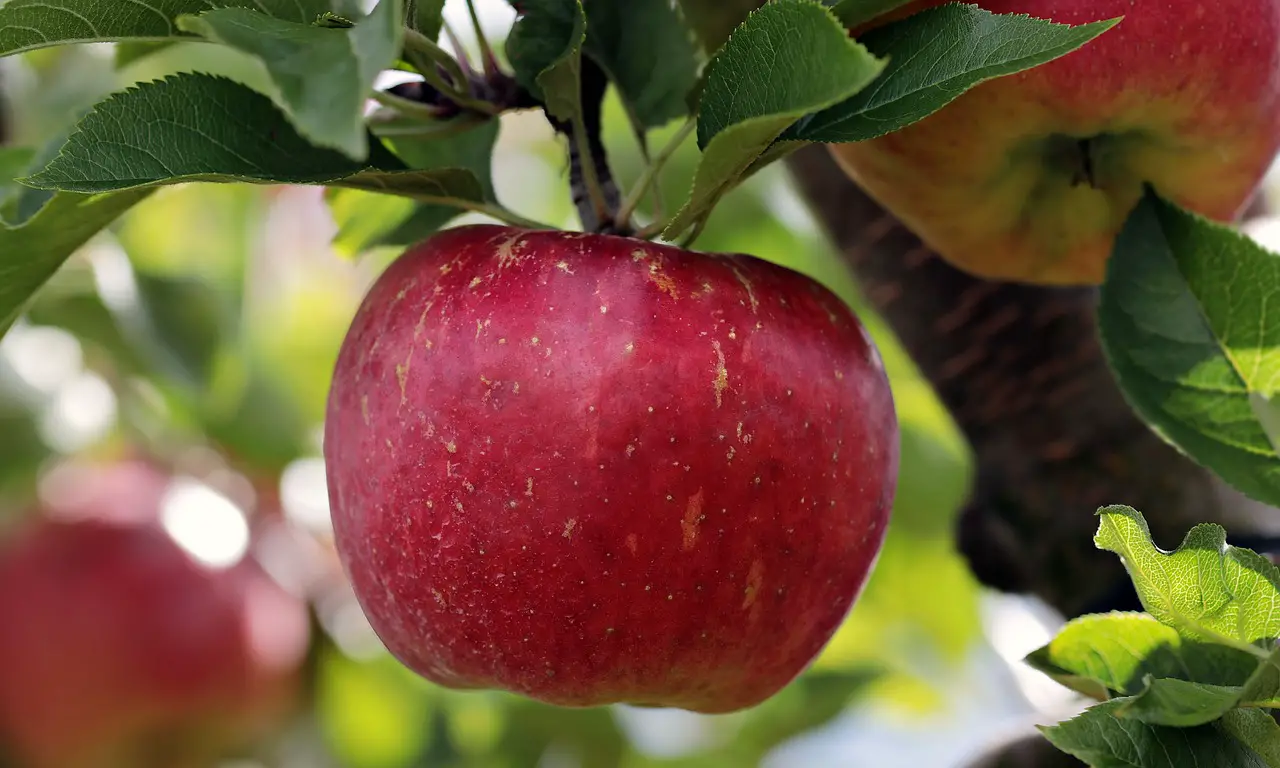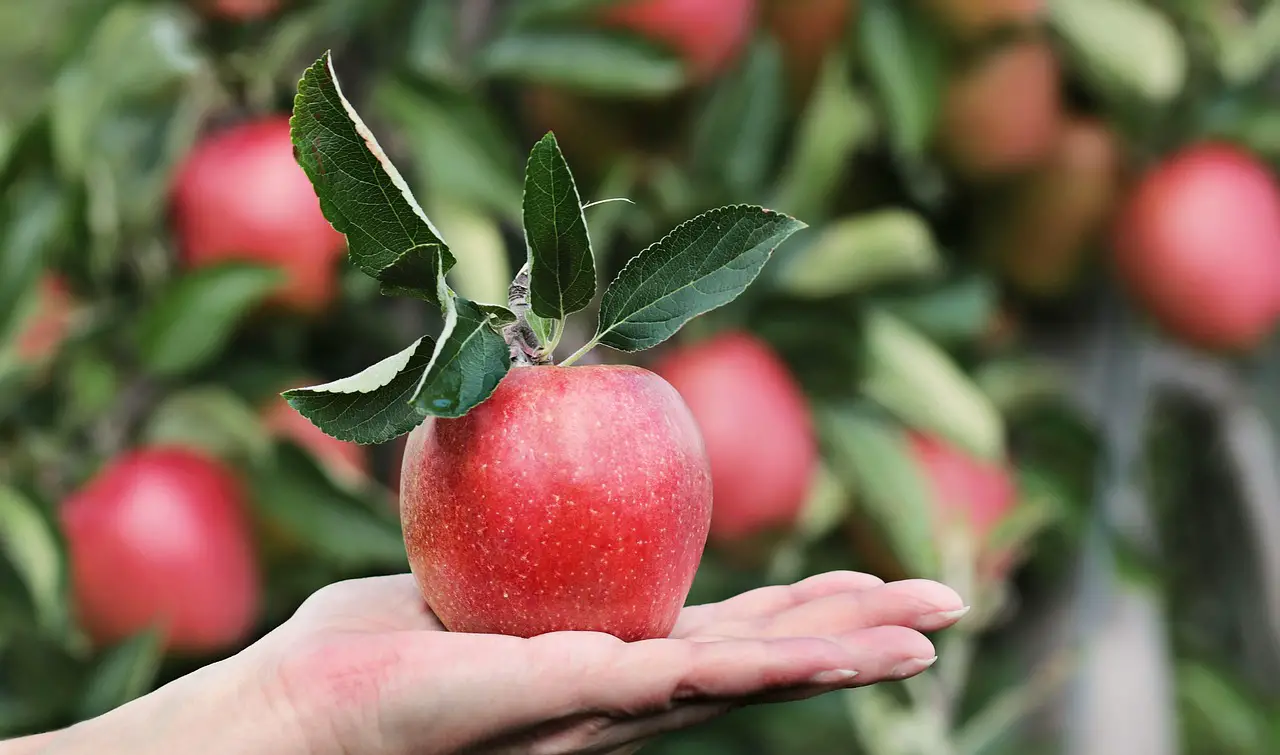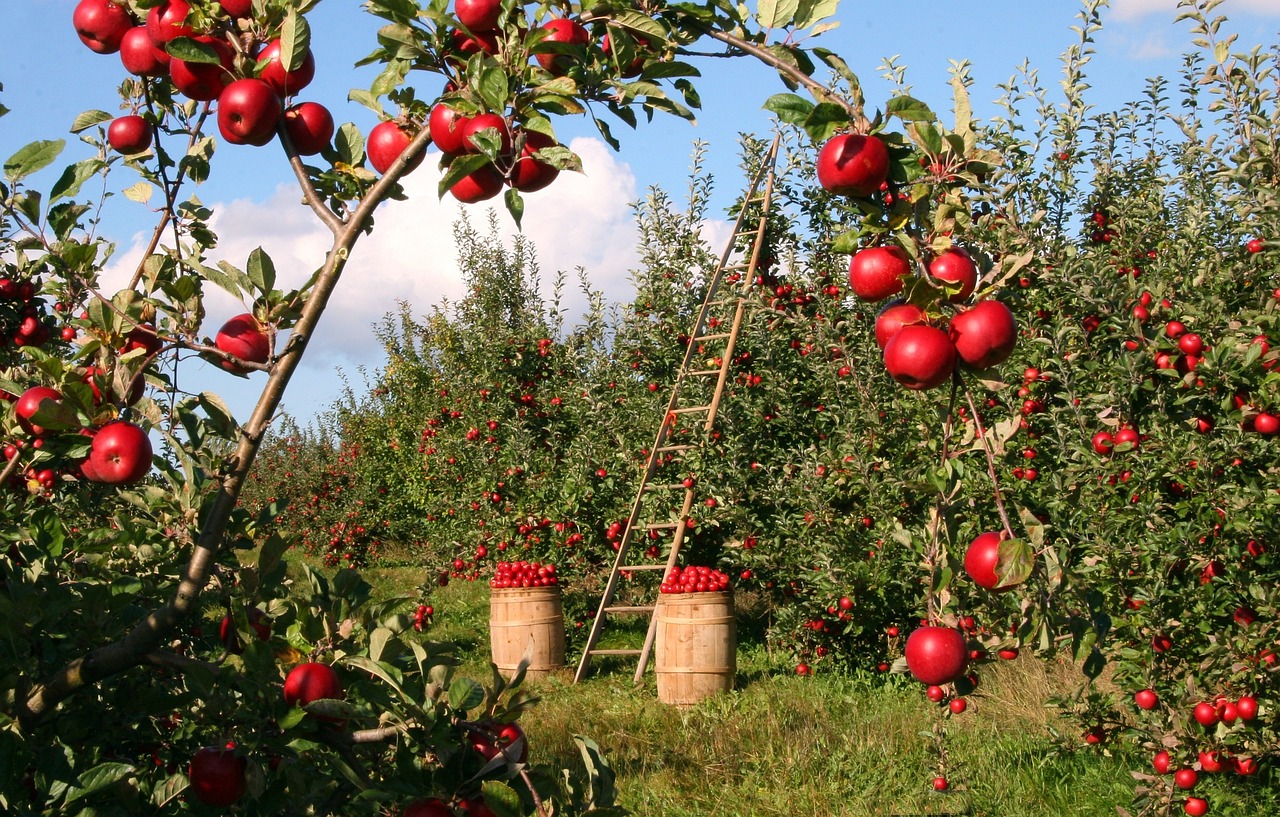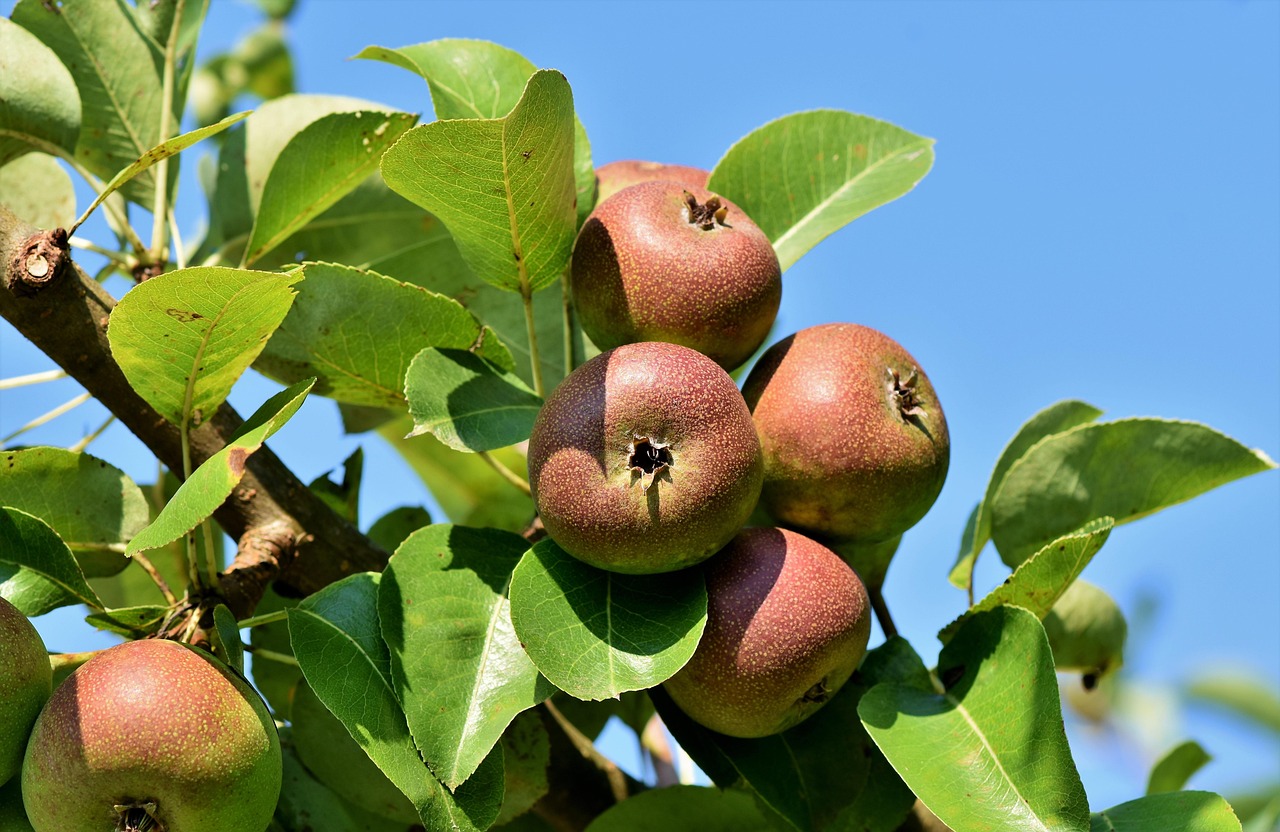Pruning wild apple trees is essential for enhancing production. This practice promotes better airflow, sunlight exposure, and nutrient distribution, ultimately leading to healthier trees and increased fruit yield.
Wild apple trees, often found in forests and untamed areas, hold the potential for abundant fruit production. However, without proper care, these trees may not reach their full potential. Pruning is a crucial horticultural practice that can significantly improve the health and productivity of these trees. It involves selectively removing branches and shoots to enhance growth and fruiting.

Understanding the importance of pruning is key for anyone looking to cultivate wild apple trees effectively. Not only does it help in shaping the tree, but it also encourages new growth and maximizes fruit quality. Wild apple trees can be vigorous growers. Without intervention, they may become overcrowded, leading to poor air circulation and increased susceptibility to diseases.
The Benefits of Pruning Wild Apple Trees
Pruning wild apple trees offers numerous benefits, which include:
- Improved Airflow: Well-pruned trees allow for better air circulation. This reduces the risk of fungal diseases.
- Enhanced Sunlight Exposure: Pruning opens up the canopy. More sunlight reaches the inner branches and leaves, promoting photosynthesis.
- Increased Fruit Production: By removing non-productive branches, resources are directed towards the most fruitful parts of the tree.
- Better Tree Structure: Pruning helps in developing a strong framework, which supports larger fruit loads.
- Ease of Harvesting: Trimming trees makes it easier to reach fruits during harvest time.
Additionally, pruning can help in controlling pests and diseases. By removing dead or diseased wood, you can limit the spread of harmful organisms that can affect the tree’s health. Understanding when and how to prune is essential for maximizing these benefits.

Best Practices for Pruning Wild Apple Trees
To effectively prune wild apple trees, follow these best practices:
- Choose the Right Time: The ideal time for pruning is late winter or early spring before new growth begins. This timing minimizes stress on the tree.
- Use Proper Tools: Ensure your tools are clean and sharp. This prevents injury to the tree and reduces the risk of disease transmission.
- Assess the Tree: Before starting, take time to analyze the tree’s shape and structure. Identify which branches need removal.
- Make Clean Cuts: Use clean cuts to avoid damaging the bark. Cuts should be made at a slight angle to promote healing.
- Remove Dead or Diseased Wood: Focus on removing any branches that are dead, broken, or infected to improve overall health.
These practices will not only help maintain the health of the wild apple trees but will also ensure a more productive yield. It’s important to remember that each tree is unique, so adjustments might be necessary based on specific conditions and growth patterns.
Understanding Tree Growth Patterns
Wild apple trees exhibit various growth patterns. Knowledge of these patterns can aid in effective pruning. Generally, wild apples grow in a natural form, often leading to a dense canopy. This density can inhibit growth and fruit production if not managed properly.

The following table outlines common growth patterns observed in wild apple trees and their implications for pruning:
| Growth Pattern | Description | Pruning Implications |
|---|---|---|
| Crowded Canopy | Branches grow closely together, blocking light. | Thinning cuts are necessary to open up the canopy. |
| Vertical Growth | Trees grow tall with little lateral branching. | Lateral branches may need encouragement through selective pruning. |
| Weak Branches | Some branches may not support fruit well. | Remove weak branches to focus energy on stronger ones. |
Understanding these patterns will help you assess which branches to prune for optimal growth. By tailoring your approach to the specific needs of each tree, you can significantly enhance both its health and productivity.
In summary, pruning wild apple trees is not just about cutting branches; it is an essential practice that requires careful planning and execution. With the right techniques and timing, you can transform a wild apple tree into a thriving producer of delicious fruit.

Tools Needed for Pruning Wild Apple Trees
Having the right tools is crucial for effective pruning. Using proper equipment not only makes the task easier but also ensures that the tree remains healthy after cuts are made. Here are some essential tools you will need:
- Pruning Shears: Ideal for cutting small branches and twigs. Look for sharp, high-quality shears that fit comfortably in your hand.
- Loppers: These are perfect for thicker branches that are too large for pruning shears. They provide more leverage and cutting power.
- Saws: A handsaw or a pole saw can help cut larger branches. Ensure the blade is sharp to make clean cuts.
- Safety Gear: Always wear gloves and eye protection to avoid injuries while pruning.
- Tree Climbing Gear: If you need to reach higher branches, consider using a harness and ropes for safety.
Each tool serves a specific purpose, and using the right one can make a significant difference in the quality of your pruning job. Always ensure your tools are clean and sharp to prevent any harm to the trees.
Understanding Tree Anatomy for Better Pruning
To effectively prune wild apple trees, it is essential to understand their anatomy. Familiarity with key parts of the tree will help you make informed decisions about where to cut. Here are some important components:
- Branches: These are the limbs that extend from the trunk and support leaves and fruit.
- Nodes: These are points on the branches where leaves and buds emerge. Understanding nodes is vital for knowing where to make cuts.
- Buds: Buds can be either vegetative or floral. Vegetative buds grow into leaves, while floral buds develop into flowers and fruit.
- Cambium Layer: This is a thin layer of tissue just beneath the bark. It’s crucial for the tree’s growth and healing process.
By understanding these parts, you can make cuts that promote healthy growth. For instance, pruning just above a node encourages new growth in that area while allowing the tree to heal properly.
Common Mistakes to Avoid When Pruning
While pruning can significantly enhance production, there are common mistakes that can harm wild apple trees. Being aware of these pitfalls can help you avoid them:
- Pruning Too Much: Over-pruning can stress the tree and reduce fruit production. It is better to prune gradually over time.
- Improper Timing: Pruning at the wrong time can lead to sap loss or damage from frost. Always check the seasonal guidelines for your area.
- Neglecting Wounds: Leaving large wounds can invite pests and diseases. Always make clean cuts and consider using sealants if necessary.
- Ignoring Tree Shape: Pruning without considering the tree’s natural shape can lead to an unbalanced appearance and poor growth.
- Using Dull Tools: Dull tools can crush rather than cut branches, leading to more extensive damage. Always keep your tools sharp.
Avoiding these mistakes will help ensure that your pruning efforts are successful and beneficial for your wild apple trees.
Seasonal Pruning Strategies
The season plays a significant role in how and when you should prune wild apple trees. Different strategies apply depending on whether you are pruning in late winter, spring, or summer. Below is a breakdown of seasonal strategies:
| Season | Recommended Actions | Avoid |
|---|---|---|
| Late Winter | Focus on removing dead or diseased wood. Shape the tree structure before new growth begins. | Avoid heavy pruning that removes too many live branches. |
| Spring | Make minor adjustments and remove any damaged branches after flowering. | Avoid pruning during flowering as it can affect fruit set. |
| Summer | Consider light pruning to control growth and remove suckers. This is a good time to assess tree health. | Avoid major cuts that could stress the tree during hot weather. |
This table serves as a guideline for seasonal pruning strategies, helping you decide when to take action based on the life cycle of the wild apple trees.
Nurturing Growth Post-Pruning
After pruning, nurturing the tree is essential for promoting recovery and encouraging new growth. Here are some ways to support your wild apple trees after they have been pruned:
- Watering: Ensure adequate water supply, especially during dry spells. Watering helps trees recover from stress.
- Fertilizing: Use organic fertilizers to supply necessary nutrients for new growth. Apply during early spring or after pruning.
- Pest Control: Monitor for pests that may target freshly pruned trees. Implement control measures as needed.
- Mulching: Apply mulch around the base of the tree to conserve moisture and suppress weeds.
Nurturing your trees after pruning will set the stage for healthy growth, increased fruit production, and overall vitality in your wild apple trees.
Identifying and Managing Pests and Diseases
Wild apple trees can be vulnerable to a variety of pests and diseases. Effective management is essential for ensuring the health of the trees and the quality of the fruit they produce. Understanding common threats and how to combat them will help protect your trees.
Common Pests
Several pests can affect wild apple trees. Here are some of the most common ones:
- Apple Maggot: This pest lays eggs in the fruit, causing it to rot. Look for small holes in the apples.
- Codling Moth: Larvae burrow into developing apples, leading to premature fruit drop. Check for webbing or frass on the fruit’s surface.
- Aphids: These small insects suck sap from leaves, leading to curling and yellowing. They can also transmit viruses.
- Spider Mites: Microscopic pests that can cause leaf discoloration and webbing on trees. They thrive in dry conditions.
Disease Management
Diseases can also pose significant risks to wild apple trees. Here are some common diseases to watch for:
- Apple Scab: This fungal disease causes olive-green spots on leaves and fruit. It thrives in wet conditions.
- Powdery Mildew: A white fungal growth appears on leaves, affecting their ability to photosynthesize.
- Cedar Apple Rust: This disease requires both cedar and apple trees to complete its life cycle, resulting in yellow-orange spots on leaves.
- Bacterial Fire Blight: A serious bacterial infection that causes wilting and blackening of blossoms and branches.
Preventive Measures
Preventing pest infestations and disease outbreaks is crucial for maintaining healthy wild apple trees. Here are some effective strategies:
- Regular Monitoring: Inspect trees regularly for signs of pests or diseases. Early detection is key to effective management.
- Proper Pruning: As mentioned before, proper pruning improves air circulation and reduces humidity around the foliage, making it less favorable for disease development.
- Sanitation: Clean up fallen fruit and debris, as they can harbor pests and diseases. Dispose of them properly.
- Natural Predators: Encourage beneficial insects like ladybugs and lacewings that prey on harmful pests.
- Cultural Practices: Use crop rotation and diversify plantings to reduce pest and disease prevalence.
Organic Pest Control Options
If you encounter pest issues, consider using organic methods for control. These options are environmentally friendly and can effectively manage pest populations:
- Neem Oil: Derived from the neem tree, this oil disrupts pest life cycles without harming beneficial insects when used correctly.
- Diatomaceous Earth: This natural powder can be sprinkled around the base of trees to deter crawling insects.
- Insecticidal Soap: A safe option that suffocates soft-bodied insects like aphids and spider mites.
- Companion Planting: Planting herbs like basil or marigold nearby can deter pests and attract beneficial insects.
The Importance of Soil Health
The health of the soil is critical for the overall vitality of wild apple trees. Healthy soil promotes strong root systems, which are essential for nutrient uptake. Here are several ways to improve soil quality:
- Add Organic Matter: Incorporate compost or well-rotted manure into the soil to enhance nutrient content and structure.
- Mulching: Apply organic mulch to retain moisture, suppress weeds, and improve soil fertility as it decomposes.
- Soil Testing: Conduct soil tests to determine pH levels and nutrient deficiencies. Adjust soil amendments accordingly.
- Avoid Soil Compaction: Limit foot traffic around tree roots to maintain aeration and prevent compaction.
Nutrient Requirements for Wild Apple Trees
Wild apple trees require specific nutrients for optimal growth and fruit production. The main nutrients include nitrogen, phosphorus, and potassium, often referred to as N-P-K. Here’s a breakdown of their importance:
| Nutrient | Function | Sources |
|---|---|---|
| Nitrogen (N) | Promotes leafy growth and overall vigor. | Compost, aged manure, legume cover crops. |
| Phosphorus (P) | Supports root development and flowering. | Bone meal, rock phosphate, fish emulsion. |
| Potassium (K) | Aids in fruit quality and disease resistance. | Kelp meal, wood ash, greensand. |
Regularly monitoring soil nutrient levels will help ensure that your wild apple trees receive the necessary nourishment for healthy growth and abundant fruit production.
Irrigation Techniques for Wild Apple Trees
Irrigation plays a vital role in the health of wild apple trees, particularly during dry spells. Proper watering techniques can make a significant difference in tree survival and productivity. Here are some effective irrigation methods:
- Drip Irrigation: Delivers water directly to the root zone, minimizing waste and ensuring efficient moisture use.
- Soaker Hoses: These hoses release water slowly along their length, providing deep watering for the tree roots.
- Spray Irrigation: While less efficient than drip systems, it can be used effectively when monitored closely to avoid over-saturation.
Caring for wild apple trees involves understanding their needs throughout the growing season. By ensuring proper pest management, soil health, nutrient delivery, and irrigation practices, you can enhance their production potential effectively.
Additional Considerations for Pruning Wild Apple Trees
When managing wild apple trees, several additional considerations can further enhance their health and productivity. These factors include local climate, tree variety, and overall orchard management practices. Each of these elements plays a role in how effectively you can prune and care for your trees.
Understanding Local Climate
The local climate significantly affects the growth patterns of wild apple trees. Different regions may have varying temperatures, rainfall, and humidity levels, all of which can influence how and when to prune:
- Temperature: Trees in warmer climates may need different pruning strategies than those in cooler areas. Warmer temperatures can lead to earlier bud break, requiring timely pruning.
- Rainfall: Areas with high rainfall may have increased disease pressure. Pruning should be done to maximize airflow and reduce moisture retention on leaves and fruit.
- Frost Dates: Knowing your local frost dates is crucial. Pruning too early can expose new growth to late frosts, which may damage blossoms.
Selecting the Right Tree Variety
Not all wild apple tree varieties are the same. Some may be more resilient to pests and diseases, while others may produce fruit earlier or later in the season. Understanding the specific variety of your wild apple trees can help tailor your pruning and care practices:
- Fruit Size and Quality: Different varieties produce varying sizes and qualities of fruit. Pruning strategies may differ based on desired outcomes.
- Growth Habit: Some varieties are more upright, while others may spread. Pruning techniques should consider the natural growth habit of the tree.
- Pest Resistance: Certain varieties are more resistant to common pests and diseases, which can influence how aggressively you need to prune.
Long-Term Orchard Management
Effective long-term management of wild apple trees involves integrating pruning with other agricultural practices. This holistic approach can lead to healthier trees and better yields over time:
- Crop Rotation: Implementing crop rotation with other plants can improve soil health and reduce pest populations.
- Diversity in Planting: Including various plant species in your orchard can attract beneficial insects and improve pollination.
- Regular Soil Testing: Routine soil tests will help you understand nutrient levels and make necessary adjustments, ensuring that your wild apple trees thrive.
Final Thoughts
Pruning wild apple trees is a vital practice that can lead to enhanced production and healthier trees. Understanding the principles of effective pruning, pest management, soil health, and proper irrigation can provide significant benefits over time. It is essential to recognize the unique needs of each tree and adapt your care practices accordingly.
By combining knowledge of local climate conditions, selecting the appropriate tree varieties, and adopting comprehensive orchard management strategies, you can maximize your wild apple trees’ potential. With dedication and attention to detail, you can transform your wild apple trees into productive assets that yield delicious fruit for years to come.
As you embark on your journey of pruning and caring for wild apple trees, remember that patience is key. Trees take time to respond to care practices, and observing their growth will inform future decisions. Each season presents new opportunities for improvement and learning in the art of apple tree management.
